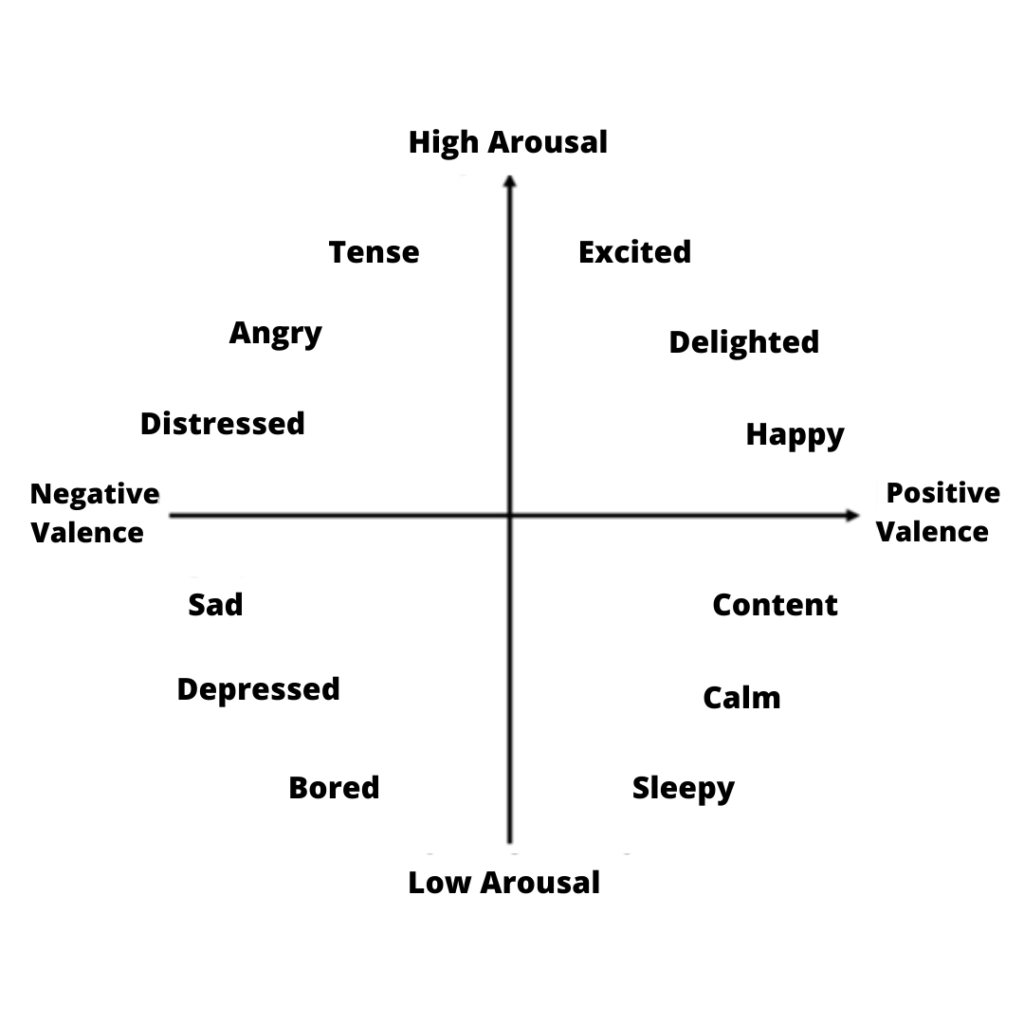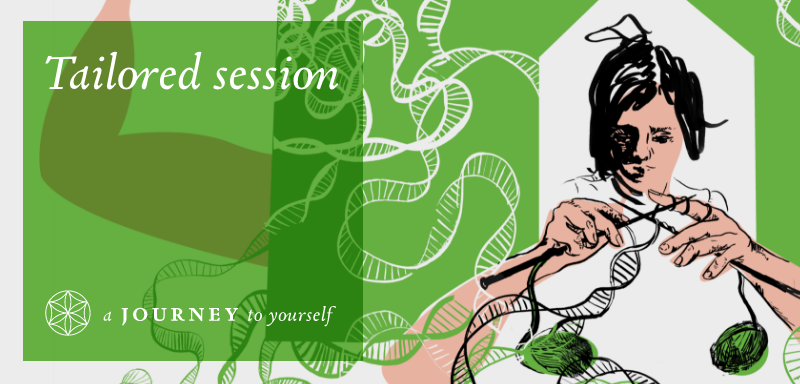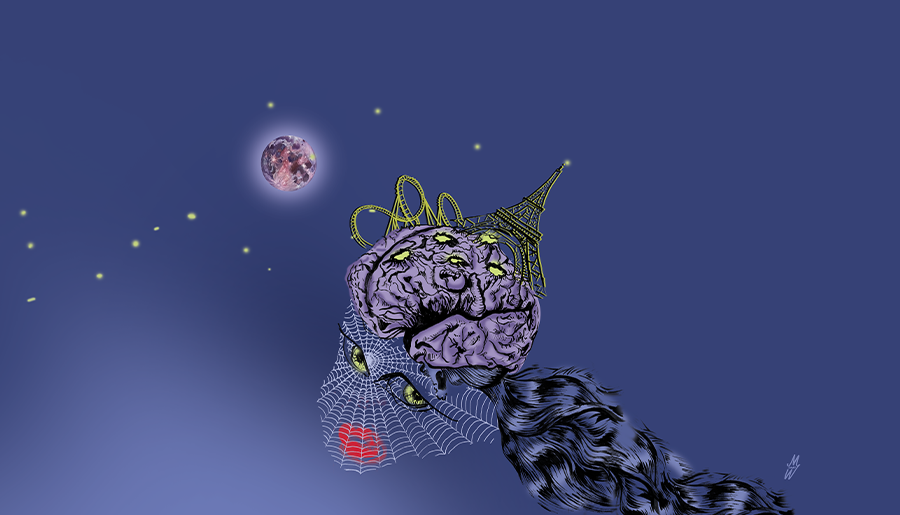About emotions and freedom.
You are an interdimensional artist who needs passion to continue your work of self-creation. Passion is understood as the whole range of emotions that lift you from shame to enlightenment. You need both negative and positive emotions.
But how do you know which of them are positive and which are not? Each of us can distinguish unpleasant feelings from pleasant ones, but how do you know it?
In this article you will learn:
- What is interoception.
- What affects affect and what does it depend on (valence and puberty).
- How emotions arise.
- What emotions and freedom have in common.
This is the result of a process called interoception, which is your inner sense. This sense is the way in which your nervous system communicates with your body. Sense of the physiological condition of the body (e.g. muscle exertion, tickling, vasomotor sensations), both conscious and unconscious. This system communicates about your bowel movements, heartbeat, breathing, satiety, and awareness of connective tissue and is an indicator of your well-being. It is responsible, among other things, for recognizing the need for thirst, hunger, and sleep. You need it to become aware of your feelings. Thanks to it, you have self-awareness of yourself and your needs. It is the ability to recognize the stimuli and feelings flowing from your body. It is one of the basic ingredients of emotions.
Various types of processes and movements take place constantly inside your body.
There is a kind of independent life going on that your brain considers as part of the world that it needs to explain and account for in its predictions. It has to recognize, explain, and give meaning to all of your biological experiences caused by various chemical and physical reactions. You do not consciously feel these interoceptive sensations as they would take all of your attention. You only feel them in general through feelings of pleasure or unpleasantness, excitement or peace. These sensations coming from within your body are exactly emotions.
Emotions are an expression of your vital energy, and therefore vital energy (prana) is delivered to your body through breathing.
When your brain moves any part of your body, whether internal or external, you lose your energy resources, so you need to replenish it by eating, drinking, breathing, and sleeping. So, everything that requires your energy consumption takes personal meaning for you, because your survival depends on it.
These energy changes in your body take place even when you are not aware of them. And also, when you feel that you are not really doing anything that is related to any action or expenditure of energy, e.g. sitting or standing. The truth is, however, that your liver’s work, breathing, your intestines, but also watching pictures, imagining, thinking, and meeting other people, all require energy. Not just your actual body movements. For this reason, your brain constantly makes analyzes and predictions about how much energy it needs and how your survival depends on it.
However, there are also activities that reduce your energy needs, such as relaxing or holding a hand with someone close. For this reason, for example, the company of a loved one during an unpleasant medical procedure makes you feel less pain because this action reduces the activation of the brain in the regions of the management of the body. Losing a loved one, on the other hand, causes physical discomfort, because it means your brain will have to struggle with life from now on, and this is associated with more stress and additional energy consumption by your body.
The cortex of the brain’s island is responsible for this whole process related to the sense of interoception, which, together with the limbic system, is responsible for emotions.
Interoceptive receptors are found in fascial tissue, muscle tissue, connective tissue, and skin. They are responsible for the feeling of hunger, thirst, body temperature, digestive processes, heart rate, nervous system arousal, and mood. The key to becoming aware of the sense of interoception is mindfulness. Only by practicing mindfulness are you able to recognize the sensations flowing from your body. Busy and stressed, you are unable to perceive these subtle signals.
When your brain represents interoceptive changes, you experience either pleasure or unpleasantness. In other words, anything your body loses energy is unpleasant, and anything that stops or increases energy loss is pleasant for you. You feel these sensations as affection. They are a summary of your energy state, a combination of valence and arousal. So, affection is the expression of your body’s emotions. It is a feeling that shows the intensity of valence, i.e. positive or negative evaluation of the experience, pleasant or unpleasant feeling, e.g. the touch of the sun on your skin. And also, a feeling that shows the intensity of arousal, which is the degree to which you feel calm or excited. Arousal reflects the activity of the sympathetic nervous system.
Affection is interoception and is an aspect of consciousness.
When you experience affect without knowing its cause, most often you treat it as information about the world, not your way of feeling the world. For example, when you feel more joyful on a sunny day, you think the world is joyful, not that you feel joy. It makes you believe that objects and people are inherently positive or negative. This is why you think something is beautiful or ugly, tasty or not good, nice and annoying people. This is why you judge others and the world around you.
It also means that a bad feeling doesn’t mean what is bad, but that most likely you will have to replenish your energy reserves because of it. Affection is woven into the fabric of every decision you make, whether you are aware of it or not.
You can track the affection using the so-called circle of affection created by psychologist James A Russell:

The distance from the source of valence and stimulation in this graph shows the intensity. This is how you determine which emotions are positive and which are negative.
Since emotions are an expression of how your body feels, it means that they are subjective, not universal, and vary among people and between cultures. They are a combination of the physical properties of your body, and the plasticity of your brain, which is shaped by the environment in which it develops, i.e. the culture in which you live and your upbringing. They are not triggered, but this is called constructive emotion theory, which Lisa Feldman Barrett excellently explains in her book “How are emotions formed?”.
So each of us has our own experience of emotions constructed by our brain.
Although it seems to you that each of us communicates our emotions in this way, it is not. For each of us, a blush, a cramped stomach, rapid breathing or a pulse, and tears mean something else. Not only that, even for you in every situation, depending on the context, the same sensations may mean different emotions. Also, the expression of emotions can be different each time. A smile can express joy, anger, nervousness, or pity depending on the situation. Each case of sadness is different from another. Each category of emotion has different physiological symptoms. This means that you can express the same emotion in a different way each time, for example, show joy by lifting the corners of your mouth a little, or laughing “with your whole body”. Such differentiation is the norm.
Instead, we all use the same words to describe our emotions to communicate our emotions, but we don’t all mean the same thing.
Some of us need only a few terms describing emotions to express our emotions, others, like painters, need a whole range of emotions that will allow them to accurately read their internal emotional states. The latter situation is known as emotional detail.
As you already know, your brain builds different neural circuits based on different experiences and information received from the outside world through your senses (including your psychic senses). The same is true of information received from inside your body. The brain uses the same processes to understand the sensations that come to you from outside as well as from inside your body.
Thanks to abstract thinking, your brain can also make predictions based on them and create different scenarios about your functioning. It simply adds your past experiences to your current information. And in doing so, creates a mental model of what your world will be like. In order for this model to arise, it gives meaning to the signals coming from the outside world and from your body through concepts. It uses them to simulate the outside world.
Emotions and freedom. Emotions and freedom.

Everything you perceive around yourself is represented by a concept in your brain.
Without concepts, you would feel the world as a great chaos. The brain gives meaning to all information that enters your brain through your senses, such as touch, smell, sound, and interoceptive sensations. For this, it uses concepts. It does it in order to predict them at any moment before they arrive, fill in missing details, and find some regularities so that you can experience the world of objects, people, or music. These perceptions are immediate and so suggestive that they make you believe that you are experiencing the world as it is, and not realize that you are actually experiencing your own world construction. This means that each time you feel emotions or perceive them in others, you categorize them using your brain’s concepts based on your own life experiences.
You shape your network of emotional concepts primarily in childhood, but this process continues throughout your life. You shape the concepts of emotions when you constantly hear words describing emotions. Your brain makes internal connections according to its physical and social environment. Your knowledge of the past creates your experience of the present moment.
The brain never sleeps.
It constantly works to keep your heart beating, lungs, and other internal organs working. This continuous spontaneous brain activity is the source of dreams, imaginations, daydreaming daydreams, and also constant predictions. By making predictions, your brain constructs the world you feel. It connects pieces of your past and tries to predict which one applies to your current situation. This activity is the main activity of your brain.
Predictions are about everything, the initiation of your body movements. The perception, and explanation of everything you hear, see, touch, smell, and feel. Your brain is constantly creating and refreshing this mental model of the world. Of course, these predictions are not always correct, so your brain corrects, updates, and changes them on a regular basis. By filtering the data from your senses so that it is consistent with the forecast. The most important goal of forecasting is to anticipate your energy needs in order to keep you alive.
Each time your brain simulates sensory data in its predictions. It automatically prepares changes in your body that have the potential to alter your mentally ingrained feelings. Your concepts are the main tool for your brain to guess the meaning of incoming sensory inputs. Concepts in your brain give meaning to the chemicals that make up flavors and smells. And they are also responsible for compassion, empathy, and imagining the feelings of others.
In order to recognize the cues or physical responses to each of your emotions. Your brain needs to interpret them accurately.
Each emotion manifests itself through the movements of your face through facial expressions and grimaces. However, people move their facial muscles in many different ways when they feel the same emotion. One emotion category involves many physiological responses, and you can represent each emotion by moving your face in many different ways.
When you meet a person’s emotions it usually happens in some context related to the body, voice, smell, and other details that surround them. This information sends a signal to your brain about the perception of emotions. So it is your perception that determines each time you perceive a person as experiencing an emotion.
The same about your emotions. Normally the data from your heart and lungs of the changing temperature has no psychological significance, but as your concepts come into play, they can take on additional meaning. Your brain uses your past experience, organized in concepts, to give your sensations meaning. When this concept relates to the concepts of emotions, your brain constructs examples of emotions.
Emotions are not your reaction to the world.
You construct them based on your initial data and past experiences. Your feelings and behaviors are created at the moment by biological processes in your brain and body. Some of your synapses only arose because others talked to you or treated you a certain way. This experience shapes the connections in your brain.
Emotions are not innate and their universality comes from shared concepts. From the universal ability of people to formulate concepts that make our physical experience relevant. Your culture’s words and concepts help you forge connections in your brain and categorize your physical sensations while feeling emotions. As Lisa writes, “Emotions are not reactions to the world, they are your constructs of the world.”
Even if you think otherwise, you are not acting rationally. Always the energy state of your body is the basis of your every decision, thought, and perception. Your bodily sensations project your future and influence what you feel and do and what you will feel and do in the future.
Since emotions are just your constructs of the world, to find out who you are repairing you must get rid of them, as well as your thoughts.
For example, meditation and other spiritual practices serve this purpose. Unfortunately, you mostly identify with your emotions as well as with your thoughts. Your emotions are also part of your ego. So the first step is to recognize the sensations flowing from your body. Understanding your needs, and identifying emotions. Another one is experiencing all emotions. From the most difficult to the most enjoyable. This is part of the evolution of your consciousness. The next step is to stop identifying with them. Letting go of them in order to feel who you really are and what your real self is.
Of course, understanding the mechanism of the formation of emotions unfortunately also means that you can use this knowledge to intentionally manipulate your emotions, and thus you, because you identify with them. Unfortunately, this happens frequently in our lives. Your loved ones use this knowledge to achieve their goals in relation to you. You use it yourself to achieve your goals. They use corporations to sell you a certain product. Media present a specific vision of the world to you. Rulers to justify their actions, etc.
Of course, these actions are not always obvious and easy to identify, on the contrary, the more subtle, the more effective.
The easier it is to control you. Therefore, whether you are aware of it or not, you dance the way someone plays for you, and not the way it plays in your soul, unfortunately. So until you begin to understand yourself and how your body works, your ego, your emotionality, and your psyche, you will not live your life only with those that others will create for you.
And you can go to protests to fight for your freedom, and the right to abortion, and continue to live under the illusion that you are free. Why an illusion? Because even if you win this fight, you lose the fight for your freedom every day. Lack of awareness means that you allow others to control your emotions as they want. You allow fear and pleasure to be used against you. Believe in danger, disease, danger, and war. You allow yourself to be embarrassed, and put into a state of anger, anger, and lust, instead of love, joy, and peace. How many have you heard, watched, and read today the messages that made you happy and brought you a feeling of love?
Real freedom is cutting yourself off from the construction of the world created by your brain. To be able to choose and live as your soul desires. And you can walk around and call out that you are demanding the freedom of others to respect it. Until you give it to yourself, you’ll never have it.
Source:
Lisa Feldman Barrett „Jak powstają emocje”, CeDeWu, Warszawa 2020.
https://lisafeldmanbarrett.com
Thanks to our partnership with Mindvalley, you can now learn tapping from the best experts in the world.
Tapping Into Emotional Mastery is a 28-day online journey towards a lifetime of emotional and energetic wellness.
You’ll join Jennifer Partridge herself for just 15 – 20 minutes a day, as she guides you through easy-to-follow video lessons, tapping exercises, and Soul Shift Challenges that give you mastery of this transformational practice.
Emotions and freedom. Emotions and freedom.


